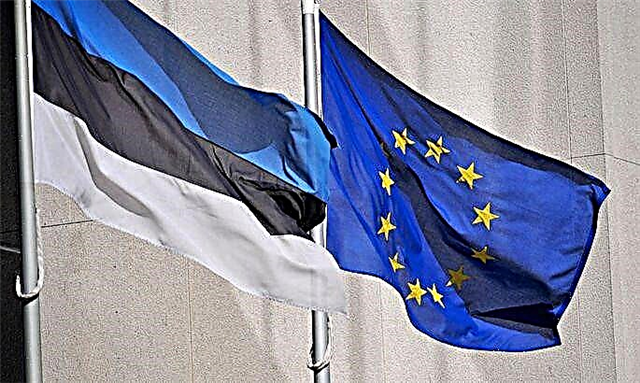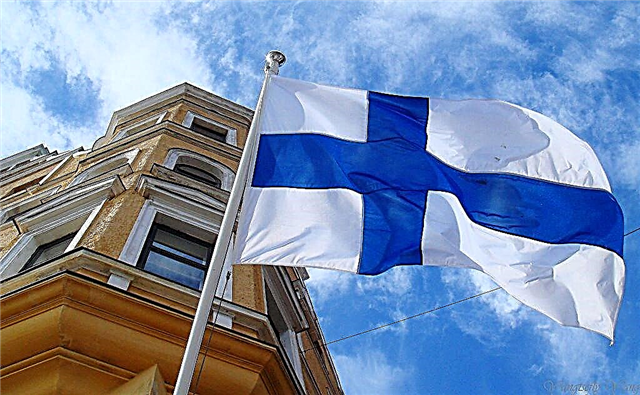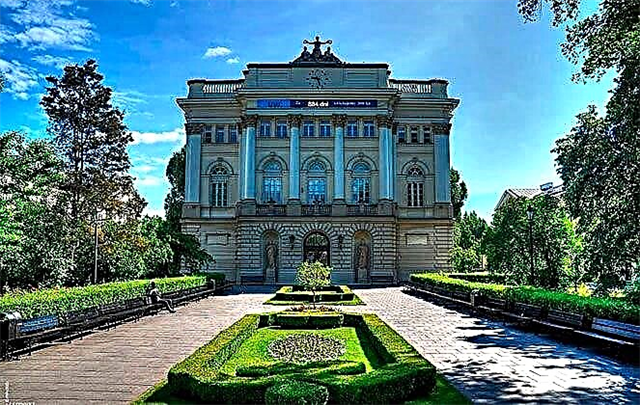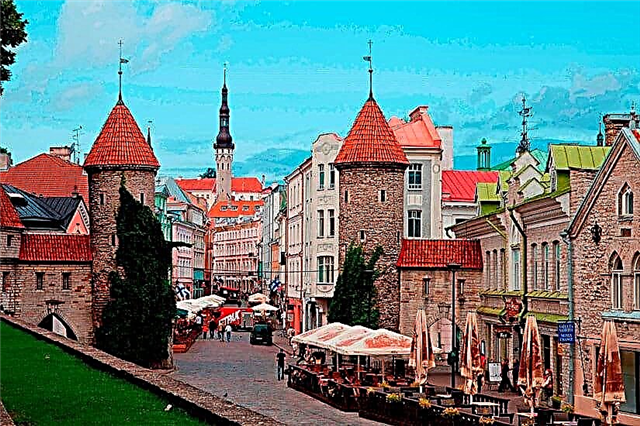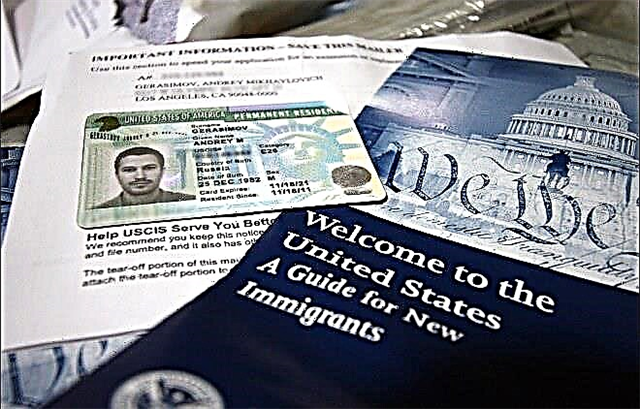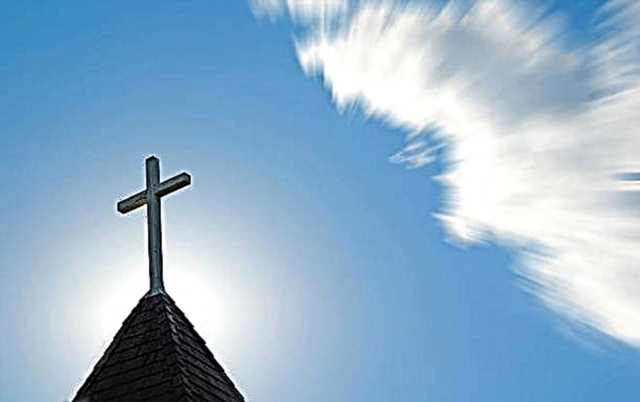Traveling around the world and immigration make many people who have arrived in this or that country to reckon with local customs and customs. In many ways, the mentality of a society depends on the dominant religion in it. Even non-religious people absorb basic moral attitudes, concepts of good and evil from their environment, therefore, which religion dominates in the host country is of great importance. Let's try to understand what role religion plays in Germany and what religious movements are widespread here.

The origin and development of religious movements in Germany
Until about the 3rd century A.D. the territory of modern Germany included the lands that were part of the Roman Empire, and the lands inhabited by various tribes and their associations that were not part of this state formation. However, the religious beliefs of the inhabitants of these lands differed little. Basically, these were various pagan cults.
That is, the religion of the Germans in Germany in those distant times was polytheistic, recognizing the presence of many gods, each of which was responsible for his own part of the organization of life. The only difference was that the inhabitants of the part of that part of Germany, which was part of the Roman Empire, accepted its pantheon of gods, and the inhabitants of the free territories practiced pagan cults that came from Scandinavia.
In the late Roman period, from about 300 AD, Christianity began to penetrate into Germany. As a result, along with numerous Roman temples, Christian religious buildings began to appear.
In particular, one of the first to be built was the Basilica of Constantine in Trier, which is currently the largest surviving Christian temple of the ancient era. In the northern part of the country, the Celtic Church, an offshoot of Christianity, which for some time was widespread in Ireland and the British Isles, had a significant influence.
The baptist of the country is considered to be Saint Boniface - Bishop of Mainz. Christianity became the dominant religion in Germany in the era of the Carolingians, the Franks' dynasty that built its empire in the center of modern Europe.
By 1000 AD, most of the population of modern Germany was Christian.
At the beginning of the 16th century, abuses by the Catholic leadership, in particular the sale of indulgences, and the Inquisition led to the birth of the Reformation movement. In 1517, Martin Luther's "Theses" appeared - a list of 95 questions addressed to the church, in fact, its criticism, which were supported by a significant part of the clergy and the population. In addition, Luther translated the Bible from Latin into a little-known dialect of German, which he himself spoke. As a result, it was this dialect that became the very German language in our understanding today.
The Reformation and the subsequent spread of Protestantism led to religious wars, at the end of which relative tolerance was established.
By the beginning of the twentieth century, most of the population of modern Germany was parishioners of the Roman Catholic or Lutheran Christian churches. In 1918, in the Weimar Republic, formed on the ruins of the collapsed German empires, religion at the legislative level was separated from the state, and freedom of religion was guaranteed to all citizens.
During Hitler's rule, the state had a complicated relationship with religion. On the one hand, the fascists sought to gain complete control over all churches, on the other, they advocated renunciation of the faith and an official exit from the church. In addition, attempts were made to introduce neo-paganism.
The Holocaust unleashed by the fascist leaders disastrously reduced the country's Jewish population and significantly affected the prevalence of Judaism.
After the split of the country in 1949 into two parts, atheism was actively implanted in the GDR (East Germany), while the government of the FRG (West Germany) was guided in relation to religion by the precepts of the Weimar Republic. The consequence of this was that the eastern lands of the country are still predominantly atheistic.
In the second half of the XX - beginning of the XXI century, migrants actively penetrate the FRG. This led to a significant spread of religions previously uncharacteristic for this country.
Religion in the life of modern Germany
Religion plays a secondary role in the life of modern Germans. Many traditionally continue to attend church, but in everyday life, religious precepts and attitudes are not followed by the majority of the population. This applies not only to Christians, but also to Muslims and representatives of other religions.
The Islamization of the country takes place, but its role is now greatly exaggerated by the media. It's just that the most orthodox adherents of various religions are more visible and more actively give informational reasons for mentioning in the press.
The current religious composition of Germany in percentages is as follows:
- up to 72% of the population are Christians of various confessions. In the general composition of the country's population, approximately 31% of the inhabitants of the Federal Republic of Germany are Catholics, 33% are Protestants, 1% are Orthodox, 7.5% are adherents of other Christian movements. As for the Orthodox, they are not only immigrants from the former USSR: Orthodoxy is widespread in the former Yugoslavia, Romania, Greece and other countries.
- 2.2% of the population are Muslims.
- 0.1% - adherents of Judaism.
- 1.3% are followers of other religions and religious groups.
- the rest of the country's population, which is about 24%, does not adhere to any religious views. These people are divided into atheists, who are sure that there is no God, and agnostics, who are convinced that it is impossible to prove the presence or absence of God, therefore the very question of his existence is irrelevant.
Statistical data, depending on the organizations that conducted the research, vary greatly. A number of organizations indicate that up to 57% of the country's population do not attend church at all and do not adhere to rituals, and in the eastern lands the share of such people is 70% of the population.
According to statistics, the most religious are the population of small towns and rural settlements. Catholicism is more widespread in the west and south of the state; evangelicals of various confessions mainly live in the north and east of the country.
Atheism is most common in large cities and throughout the eastern lands.
The role of religion in the life of the country
Religion does not play a significant role in the everyday life of the inhabitants of Germany. The priority for the current leadership of the country is the person himself, not his religion.
The bulk of the population of the state considers itself members of various religious denominations, but this is not expressed in everyday life.
True, there are religious lessons in schools in Germany. These classes are taught exclusively by Catholics and Lutherans. Students who are atheists and members of other religions are required to attend ethics classes instead.
There are also questions that, having a religious form, have no direct relation to religion. So, in 2021 in Hannover, Lubeck, Hamburg and Bremen, it was decided to declare Reformation Day - October 31 - a holiday.
Despite the seemingly religious component, the main idea behind this is that there are fewer holidays in the eastern lands than in the western lands, where a number of Catholic holidays are non-working days. Lübeck and Hamburg have already approved the proposal, Hanover and Bremen are awaiting a decision.
The most noticeable influence of religion on the life of Germany on Sundays. On this day, it is almost impossible to find a working store - the orthodox in the government believe that this day should be devoted to family and church, and not to shopping.
Church tax
The country's constitution classifies various religious organizations as civil corporations. This allows such organizations to levy taxes from their members, which are spent on various, primarily charitable, aspects of the activities of religious communities.
The tax is paid simultaneously with income tax. Its size is 2-3% of income.
For the tax to begin to be collected, the payer must voluntarily declare his membership in the community. Perhaps, it is with this feature of the legislation that such a high percentage of official atheists in Germany is associated.

Religious monuments in Germany
Despite the atheistic attitude of the population of Germany, there are a lot of churches of various religious confessions in the country. This is especially noticeable in small towns with low-rise buildings: services are held in churches, parishioners are present at services, and bells can be heard from time to time.
In Germany there are a large number of church buildings that are monuments of history and culture. Such structures include:
- Catholic Cologne Cathedral;
- the Protestant Ulm Cathedral;
- The Imperial Cathedral of Aachen, in which the emperors of the Holy Roman Empire were crowned;
- Basilica of the 14 Holy Helpers in Bavaria;
- Old Chapel in Regensburg;
- Collegiate Church of St. Stefan in Mainz.
The list of stunning monuments of church architecture and history is almost endless - in every German town you are sure to find a beautiful church.
Finally
Despite the huge number of churches in the life of modern Germany, religion does not take up much space. The majority of the population are Christians or come from this environment. The moral and ethical attitudes of Christians of all confessions are the same, and they are close to the residents of Russia, Ukraine, Moldova and Belarus. The significant influence of the Islamic factor in the country has not yet been felt.




